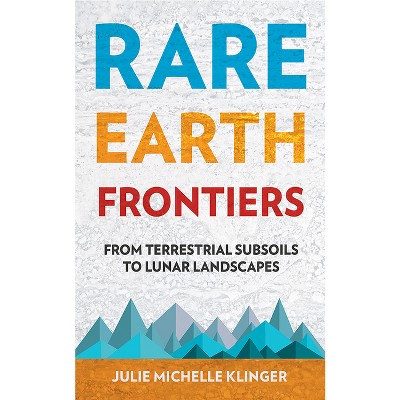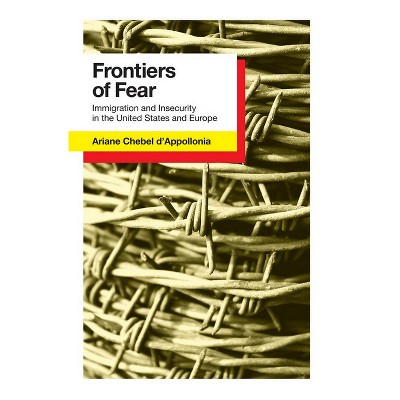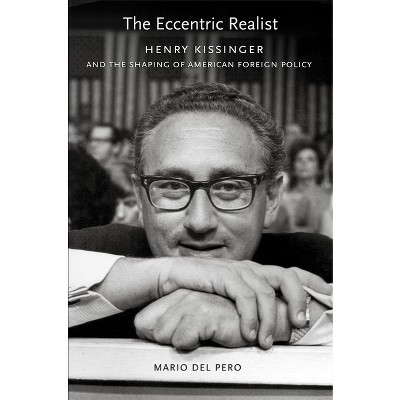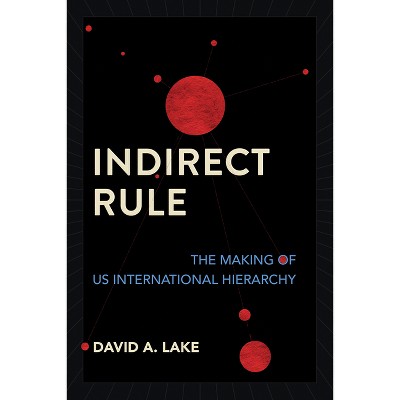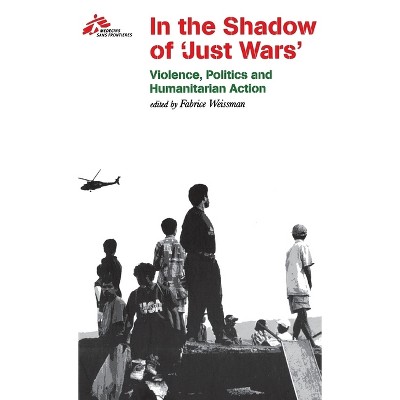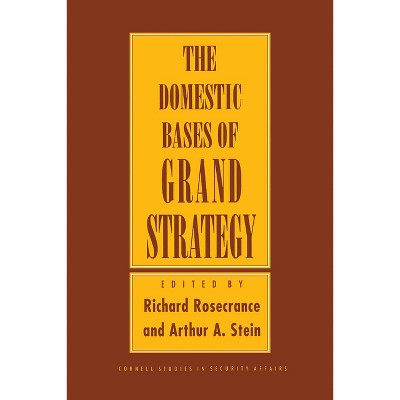Sponsored

Eurasia's New Frontiers - by Thomas W Simons (Hardcover)
In Stock
Sponsored
About this item
Highlights
- "As a global power, the United States will always be interested in Eurasia and engaged with its peoples and nations.
- About the Author: Thomas W. Simons, Jr. is Visiting Scholar at the Davis Center for Russian and Eurasian Studies and Lecturer in Government at Harvard University.
- 200 Pages
- Political Science, International Relations
Description
About the Book
As a global power, the United States will always be interested in Eurasia and engaged with its peoples and nations. Eurasia is too large and important a part of the world to be ignored. It casts a shadow of the old Soviet threat forward in time, and...
Book Synopsis
"As a global power, the United States will always be interested in Eurasia and engaged with its peoples and nations. Eurasia is too large and important a part of the world to be ignored. It casts a shadow of the old Soviet threat forward in time, and its axis-the Russian Federation-is nuclear-armed. So are its neighbors, China to the east, India and Pakistan to the south; and there are others in the queue. Eurasia's new nations are players on today's most urgent global issues: terrorism; counterproliferation of weapons of mass destruction; economic stability and growth (including its energy centerpiece); stable political development (including democratization, its long-term key).... So the context for why Eurasia matters is very large."--from Eurasia's New Frontiers
In Eurasia's New Frontiers, Thomas W. Simons, Jr., a distinguished veteran of the U.S. Foreign Service with extensive experience in the Communist and post-Communist worlds, assays the political, economic, and social developments in the fifteen successor states to the Soviet Union that comprise Eurasia--from Estonia to Azerbaijan and from Tajikistan to Ukraine, centered on Russia. He makes a compelling case that the United States can play a large role in shaping the future of this vast and strategic region, and at less cost than during Soviet times. This can only be accomplished, however, if U.S. policy toward Eurasia shifts from alternating hand-wringing and indifference to steady and flexible engagement that focuses on its fledgling individual nation-states.
Throughout Eurasia, Simons shows, civil society is anemic, market reforms have been discredited, and political development has been stunted. Authoritarian and semiauthoritarian regimes are firmly in place from Belarus to Central Asia; in Ukraine, Moldova, and even Russia, some democratic forms have taken hold; but everywhere, politics features struggle among elites over access to economic resources, albeit often defined in terms of "sovereignty." Almost everywhere, states are consolidating: as resurgent Russia presses on its neighbors, they can now press back, alone or with help from the outside world. Simons believes that the post-Soviet space needs stable development of state institutions within which new civil societies can take root and grow. Potentially strong state institutions are, in his view, Soviet Communism's "secret gift" to Eurasia, and they may well enable the region to become in time an arc of promise, an anchor of relative stability in a troubled part of the world.
For that to happen, Simons argues, the nationalism that gives content to these new state structures must be the right kind: civic and inclusionary rather than ethno-religious and exclusionary. Because Russia is so diverse and its nationalism so state-oriented, Simons also sees it as more likely to develop that kind of civic nationalism than some of its new neighbors. The United States has a limited but real role to play in helping or hindering its emergence everywhere in Eurasia. If it wishes to help, though, the U.S. must realize that in this part of the world the path to democracy leads through state development. The U.S. will continue to advocate for its core values, but it can best act as a City on the Hill for Eurasia if its policy centers on the emerging new states of today, for they must be the incubators of tomorrow's civil societies.
Review Quotes
In this long essay, Simons, a Foreign Service veteran and former ambassador to Poland and Pakistan, addresses one of the most vexing intellectual challenges of the post-Soviet world: recognizing political coherence in the 'confused and confusing intermingling of empire and nation' represented in the 15 Soviet successor states. The author identifies some of the most fundamental political legacies that define present-day Eurasia. Readers should reflect carefully on assertions such as 'post-Soviet ethnocultural nationality was not much of a building block for nationalism' in the Russian Federation. Discussing the consequences of this and other conditions, affecting all but the Baltic states, Simons contextualizes more obvious political features like the general weakness of civil society, the intra-elite struggle to control the export of raw materials, and the fundamental significance of Vladimir Putin. The author concludes with a perceptive account of U.S.-Eurasian policy in the current Bush administration with such caveats as an awareness that 'neo-containment' may not be as appropriate for Russia as it was for the Soviet Union and the importance of shaping Russia's status in the 'far abroad' beyond its neighbors.
-- "Library Journal"In this small, spare book, Simons is the first to address one of the key failings of U.S. Russia policy, although in his gentle nudging he cares less about delivering criticism of the past than he does about offering guidelines for the future. To understand Russia and the rest of the post-Soviet space, he argues, the pieces have to be put together and treated as a composite. That is, all of the post-Soviet states must be understood in the context of the stumblings, contradictory paths, and disappointment of Western hopes that they have in common. When it comes to U.S. policy, patience and taking the long view is what Simons urges: accepting civil society's dim near-term prospects and the consequent need to engage those who command the state, while working to gradually transform those leaders. Simons is not despairing. 'Today, ' he writes, 'nearly two decades after the Soviet Union dissolved, Russia's state-nationalism-without-content makes the rest of the world the arbiter of Russian national identity.'
-- "Foreign Affairs"About the Author
Thomas W. Simons, Jr. is Visiting Scholar at the Davis Center for Russian and Eurasian Studies and Lecturer in Government at Harvard University. He was a member of the U.S. Foreign Service from 1963 through 1998. Simons was American Ambassador to Poland (1990-1993) and to Pakistan (1996-1998), and as Coordinator of U.S. Assistance to the New Independent States of the former Soviet Union (1993-1995) he traveled to and worked with the leaderships of all fifteen. He is the author of The End of the Cold War?; Eastern Europe in the Postwar World; and Islam in a Globalizing World.







